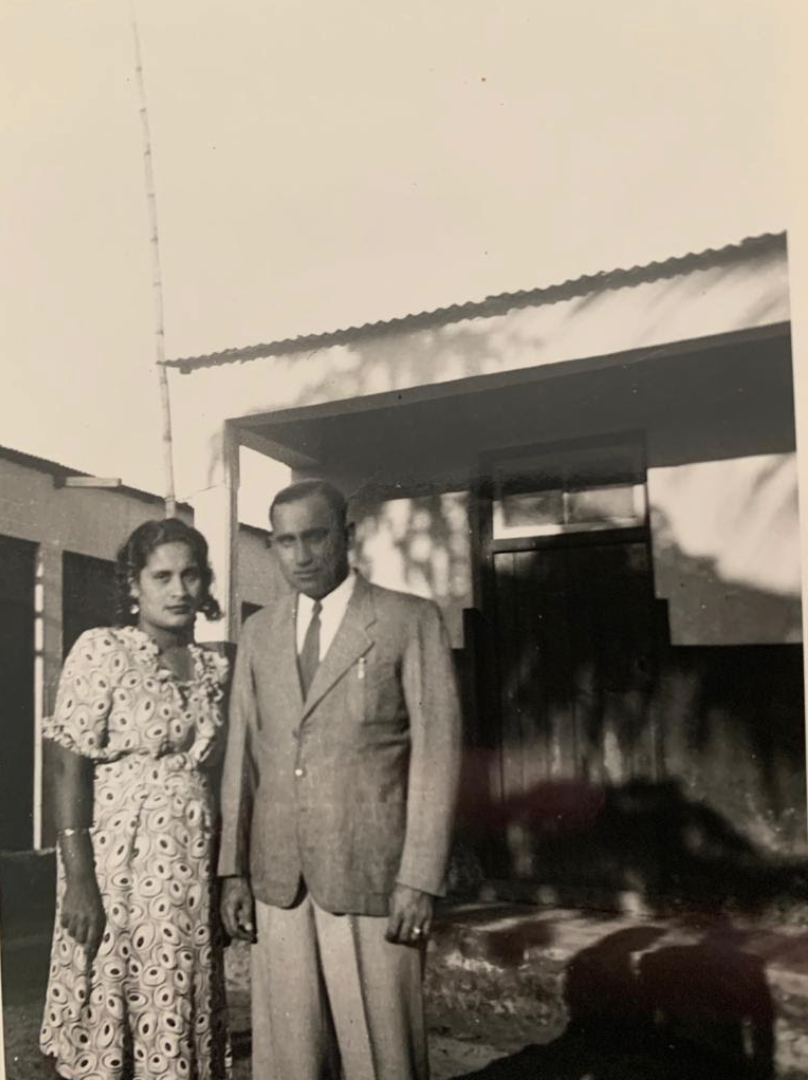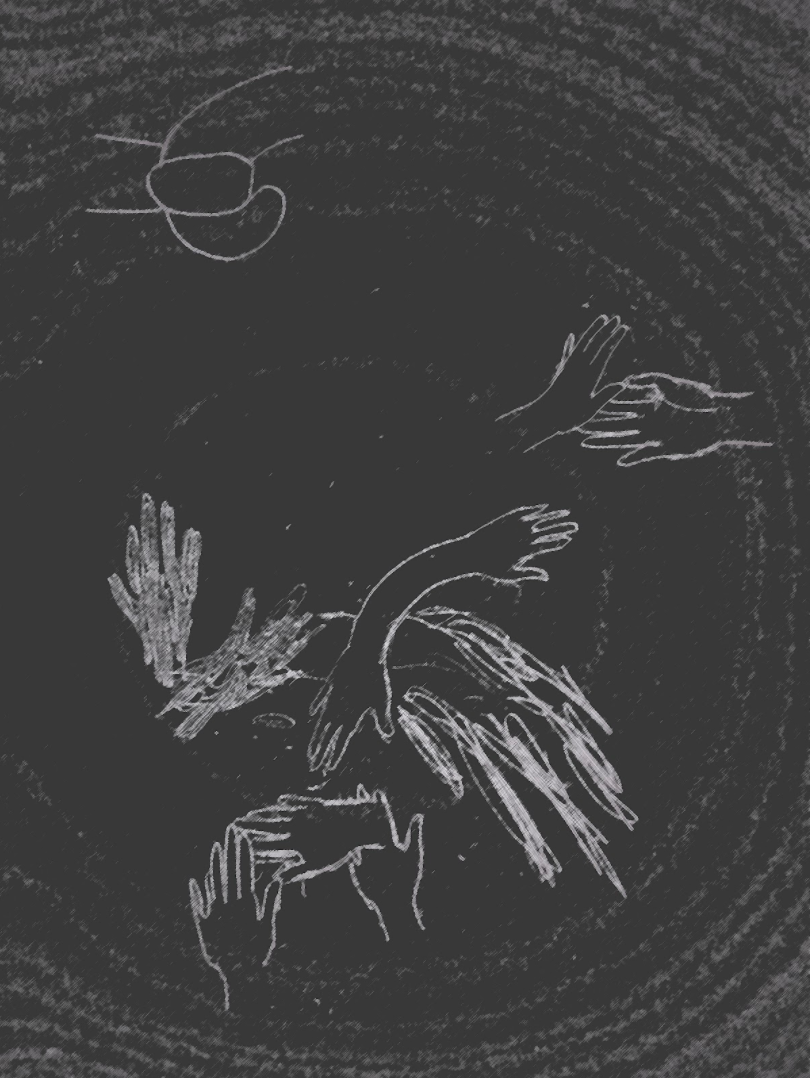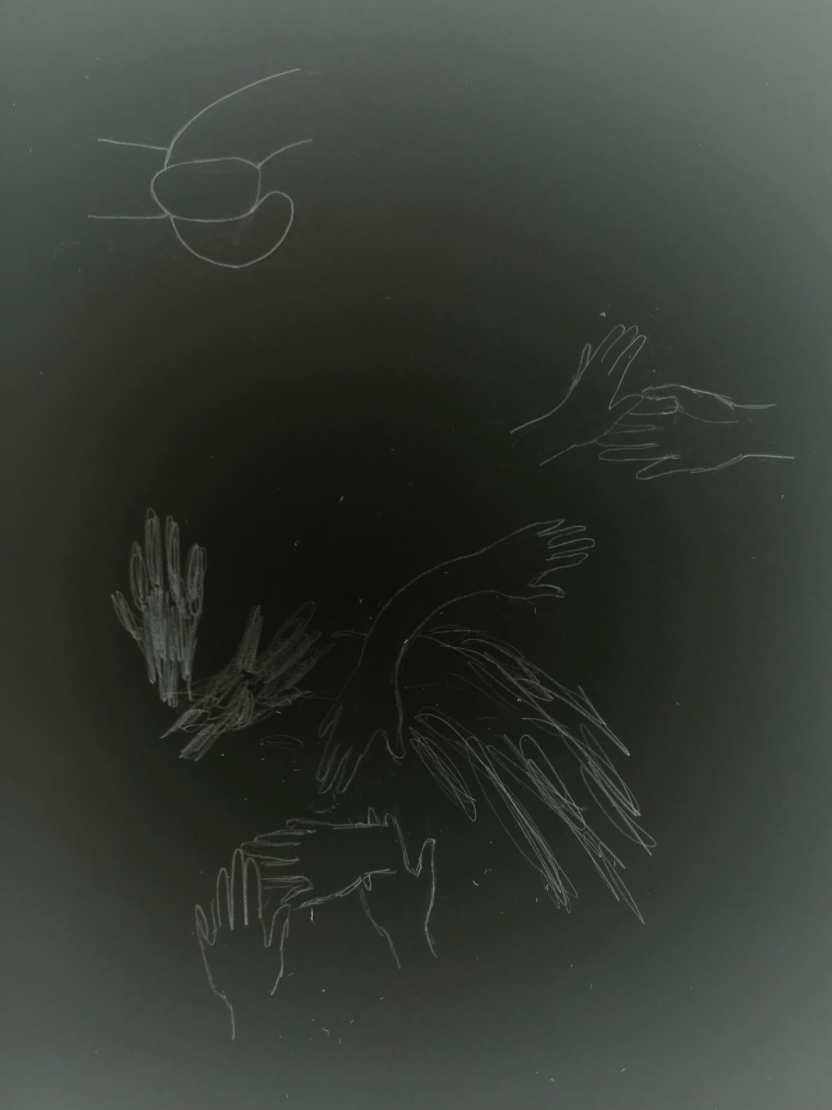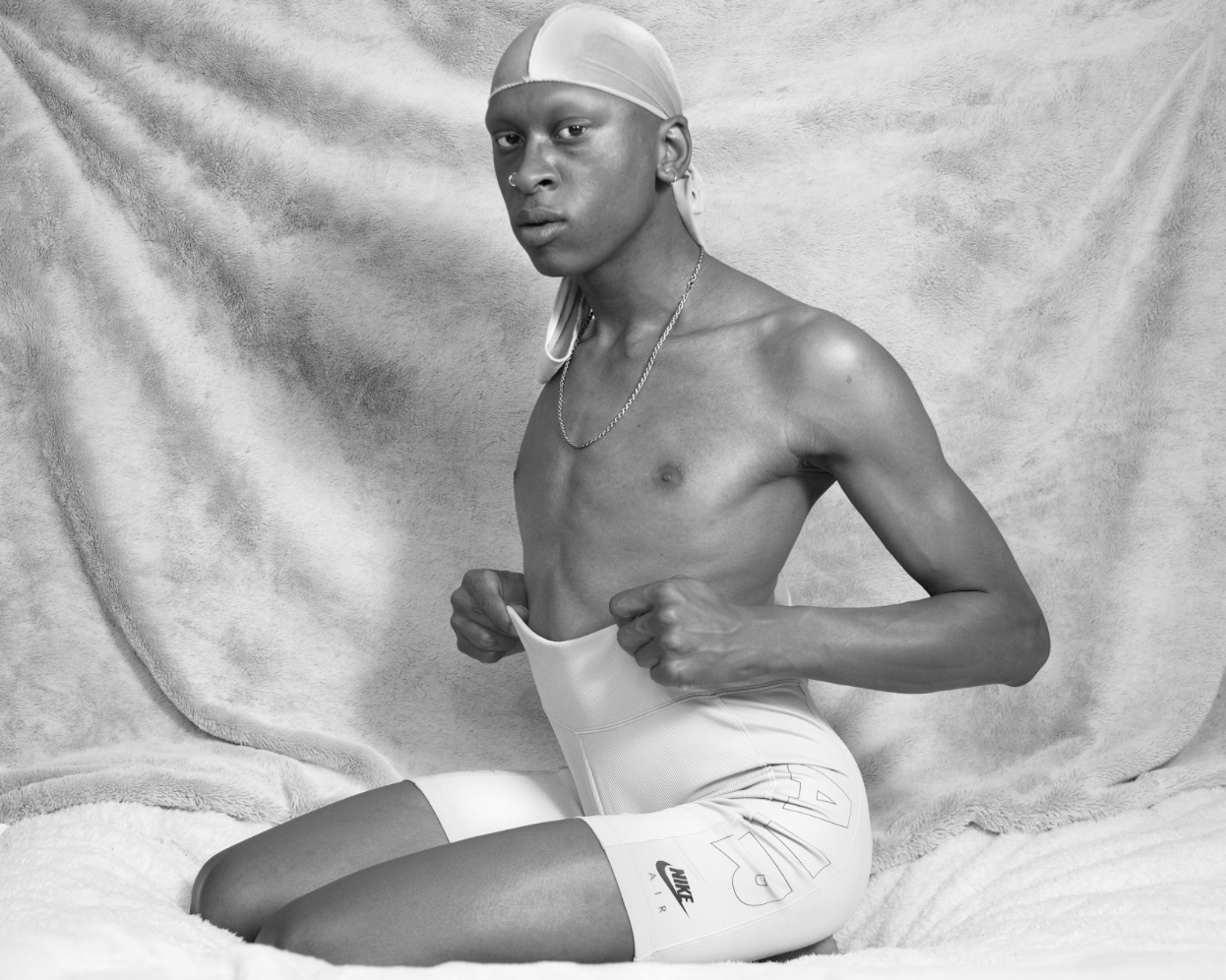[Wow, where has his crotch gone?]
Acknowledgements
Hana Noorali
In this black and white photograph, we can see a mixed heritage woman and a man standing to the left of the frame. Neither one is smiling but they seem somewhat at ease. They are visible from the knees up and while we can see them face on, they are slightly turned towards each other. The woman is wearing a white dress that has a v neckline, is short- sleeved and cinched at the waist. It has a repeating circular pattern printed on it. She has dark shoulder-length curly hair and she is wearing a silver bracelet on her right forearm. The man is wearing a light coloured wide-legged suit, white shirt and a tie. There is a pen inside the top pocket of his suit jacket that is buttoned up. He has short dark slicked backed hair and he is wearing a silver ring on the fourth finger of his left hand. Behind the couple, there are two low, one storey buildings. Between them, a long and lonely bamboo pole extends beyond the top edge of the image. Both buildings have corrugated metal roofs. There is a door on the building directly behind the couple that has a two paned window above it. It also has a tall step that extends up from the ground to the bottom of the door and runs the length of the building. The woman and man’s figures cast wobbly shadows over the step. Shadows of trees are also visible on the façade of the building. The top third of the image is taken up with the sky, a block of flat beige colour. This is a description of a photograph of my grandparents on my father’s side which was taken in Maputo, Mozambique in 1938. The man was born in Maputo, the woman was born in South Africa. They both lived in Maputo after their arranged marriage. I have never met my grandparents. I’ve never heard their voices, I do not know if they knew about me, and I do not know their first names. Their surname was ‘Noor Ali’ which my father merged into one word when he moved to the UK in the 1970s as he was worried about how ‘Ali’ might be perceived. This image is the only way I can speak of my father because we don’t talk. I’ve been told my father wrote poetry, but I’ve never heard it. I have held a mental image of my grandparents for years but until a few months ago I had never seen their photograph. This image represents a history I am only able to explore through my flat computer screen. It won’t ever be able to answer the questions I have for my grandparents but reading and looking at this photograph I feel I know them. Family has an intangible pull, a relationship that doesn’t need to be quantified to make it legitimate.
Maputo, Mozambique, 1938. Image courtesy Hana Noorali
Marcela Torres



Golden
 He claims to know me better than my shadow does, 2020, Jamaica Plain, MA
He claims to know me better than my shadow does, 2020, Jamaica Plain, MA

Anu Ambasna
Benjamin Krusling


